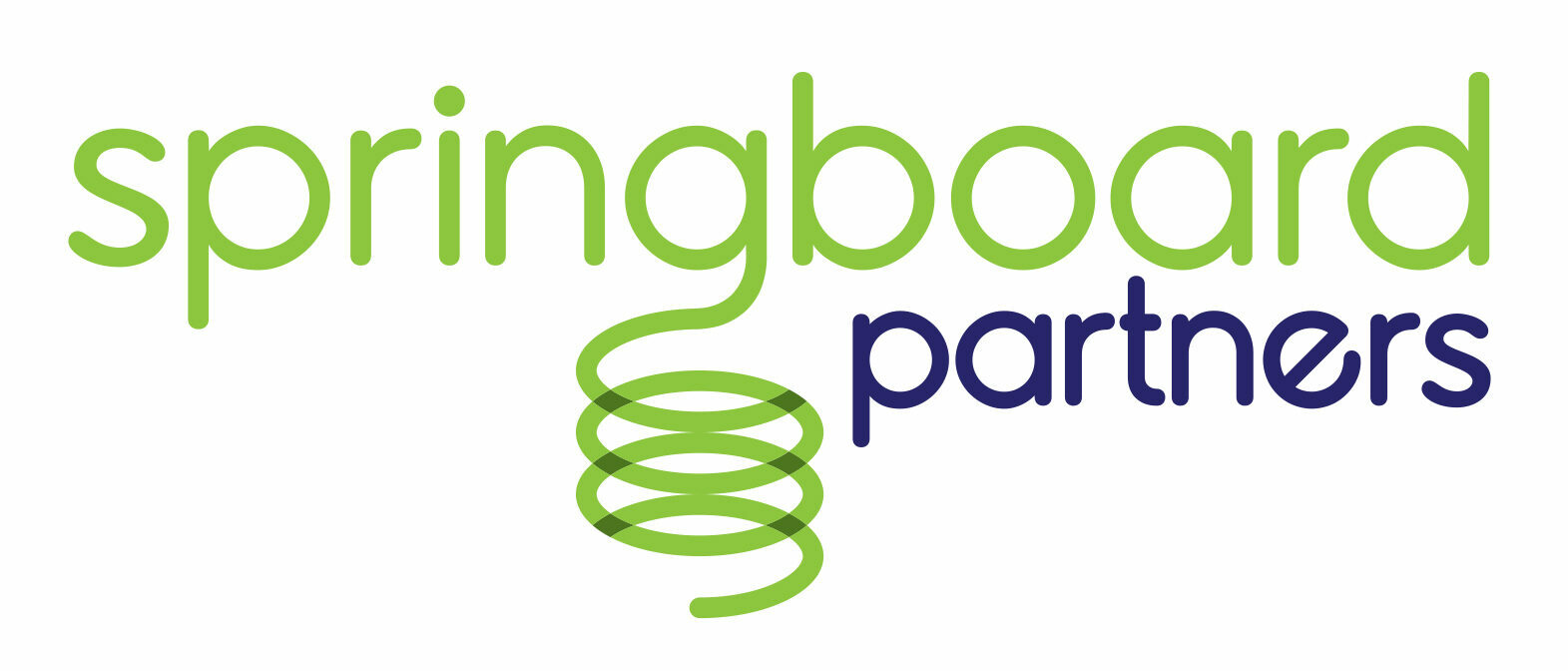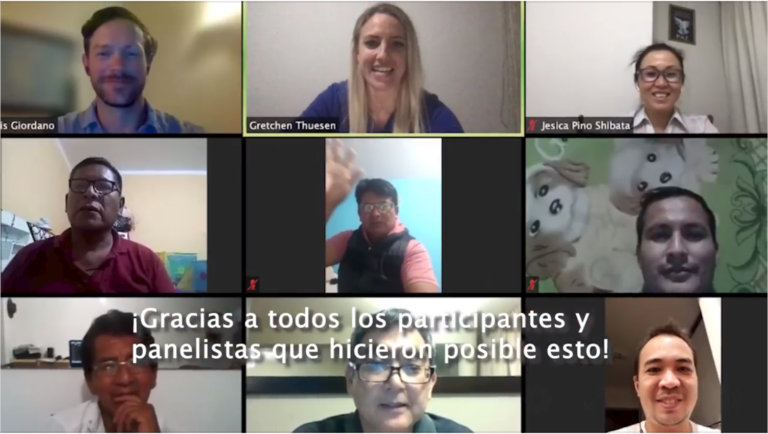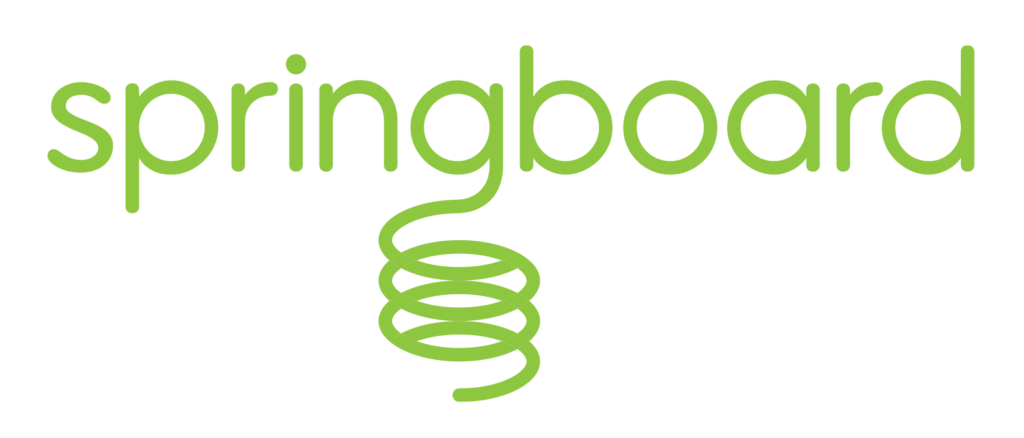Gretchen Thuesen is a Peru program manager for Future of Fish. Her program focuses on identifying and implementing market-based solutions for environmentally sustainable and responsibly sourced seafood in Peru. She has been with Future of Fish since 2016, and working in Peruvian fisheries since 2018.
Describe the purpose of the Fisher-Chef Learning Series.
Unsustainable practices like illegal fishing and seafood fraud are, unfortunately, common in Peru. At the same time, seafood sustainability is a relatively new concept, and there is currently very little external pressure to change. This means there is a need to create a push for that change from within, particularly given the economic and cultural significance of seafood in Peru.
For us, the key to starting this movement is uniting supply chain actors so, together, they can create a shared vision and plan of action towards sustainability. After all, they are key to ensuring responsibility is maintained from sea to plate.
The virtual meetings we facilitated in March aimed to do exactly that: bring together a small group of Peruvian fishermen and chefs to explore how they can work together toward sustainability.
What were Future of Fish’s goals for this series of virtual meetings?
One of our long-term goals as part of creating a sustainable seafood movement in Peru is to form alliances with multiple sectors including supply chain actors, the government, and other NGOs to define a joint vision and plan of action toward seafood sustainability together, so that responsible sourcing becomes the standard in the future. Connecting the two ends of the value chain is the first step toward that goal.
However, before a shared vision can be created (and in order to ensure their needs are included), it’s important to start simply by getting to know each other, to start a dialogue. Thus, our goals for these virtual meetings were two-fold: provide a space for fishermen and chefs to build relationships and understanding as they sought solutions to overcome the challenges they face.
What challenges did you face throughout the planning process? How did you overcome those challenges?
Our biggest challenge was bringing people together in a virtual setting who had never met in person. We had originally hoped these get-togethers would be in-person, but because of the pandemic virtual meetings were the only option. Ironically enough, COVID worked in our favor: most participants, who previously had little experience with virtual platforms, had become familiar and accustomed to connecting virtually during the course of the pandemic. As a result, all participants were comfortable meeting one another for the first time on Zoom.
Another challenge was retention: we had some participants that couldn’t attend some of the meetings due to unexpected events, and others that simply stopped participating. Regardless of the reason, we sent a video recording and a written summary of each session to all participants to keep them involved in the discussion.
We also recognize that this is a natural part of the process when finding key champions; some stick around, others don’t. Importantly, this allows us to determine who is willing to put in the time and effort to drive this work forward.
Your participants hadn’t met in person before convening for this series of calls. What did you do to build trust and rapport among the group in a virtual environment?
As mentioned above, we had a little help from COVID in terms of familiarity with virtual platforms. Because this was the first time these participants were meeting, we made sure to provide a space for them to get to know each other on the first call. In fact, we didn’t talk about sustainability at all on that call. Instead, we made it clear we wanted to hear from them. We asked them to talk about themselves, their needs, and their challenges.
Of course, our goal was to focus on challenges they face with marine resources and how they can be overcome, but we allowed space for the conversation to go in another direction based on what the participants wanted to discuss. This allowed all participants to contribute, be heard, and understand one another’s point of view before brainstorming together.
Which aspects of your virtual meetings would you say were the most successful? Why?
Striking a balance between covering topics that advanced the group toward identifying solutions to overcome the challenges they face while allowing the flexibility for them to discuss topics of interest to them worked very well. In other words, while each call had a pre-planned agenda, it wasn’t paramount to ensure it was strictly followed. In this sense, the calls were semi-structured, which allowed us to hear what really matters to the participants and therefore make sure we allowed space for their concerns to be discussed.
Another successful aspect was allowing the participants to learn not only from each other, but also from their peers from other countries. Seeing examples of how fishermen and chefs have worked together toward sustainability in Mexico, Chile, and South Africa inspired participants about the possibilities in their own country, and has motivated them to not only learn more about these initiatives but to find a way to adapt them to Peru.
Because you planned a series of three calls, you had the opportunity to reflect and make changes along the way. What changes did you make between the first and subsequent virtual meetings, and why did you make them?
One of our main priorities on these calls was to listen, then reflect back what we’d heard on subsequent calls. We did this by sending written summaries after each call as well as a brief reminder of this summary at the beginning of each subsequent call. The goal was to both remind the participants of what they’d discussed on the previous call, and to demonstrate that these were their thoughts, that they were owning the process and we were simply facilitating it by listening and guiding conversations.
Another priority was to adjust upcoming sessions so they better fit participants’ interests based on what we’d learned from the preceding calls. For instance, we briefed panelists before the second call so that their presentations addressed challenges the participants had mentioned on the first call, and changed the third and final call from being about defining a high-level shared vision toward sustainability to identifying action-oriented solutions due to participant interest in finding ways to replicate the initiatives from the second call.
What advice would you give to another organization that is planning a virtual meeting with participants who aren’t yet familiar with one another?
Finding someone who has a close relationship with each of your participants and having them lead on coordination is key to getting them to show up. If a person they know and trust is bringing them together, it makes all the difference.
Also, think about what really brings the participants together, what unites them even if they are from different stakeholder groups, and make sure that is the key focus in these meetings. This will not only draw them in and make them want to participate, but will give them a common ground to build upon.
In situations where participants are not yet familiar with one another, it is important not to structure the first call too much. Allowing space for them to get to know each other is crucial, so try not to go into that first meeting with a rigid agenda.
While you likely have specific goals for these meetings and will be guiding the discussion according to those goals, it’s important to allow for some flexibility to provide space to connect, share, and learn from one another. Think of semi structured interviewing: have topics or questions you’d like to cover, but also allow them to take the conversation where they choose.
Similarly, it is important to listen and reflect back both during and after meetings to ensure participants not only feel heard, but also get a sense of ownership over the process. This helps them see the value in participating, thereby increasing the likelihood of continued engagement and excitement about your initiative.
What was the outcome of the virtual meetings?
We put together a video about the fisher/chef learning exchange, including the solutions the participants identified and how they plan to keep working together toward sustainability. Feel free to check out the video in English and Spanish if you’re interested!
Also, since the 3-part series in March, the group has formed a WhatsApp group and continued meeting to find ways to develop initiatives that work towards responsible fishing in Peru. If you’re interested in keeping updated on how this group is progressing, keep an eye on the Future of Fish Facebook page, as well our Contigo Mi Pescador Facebook page (in Spanish).


